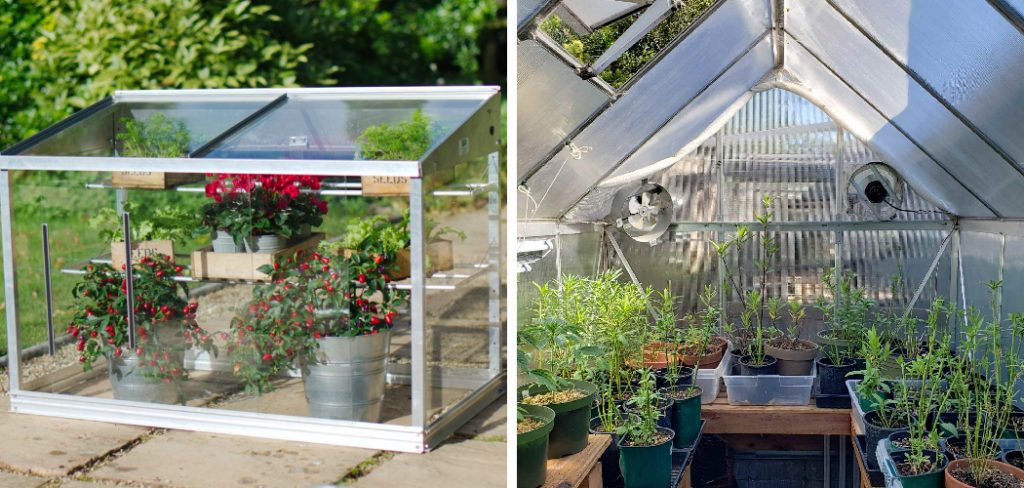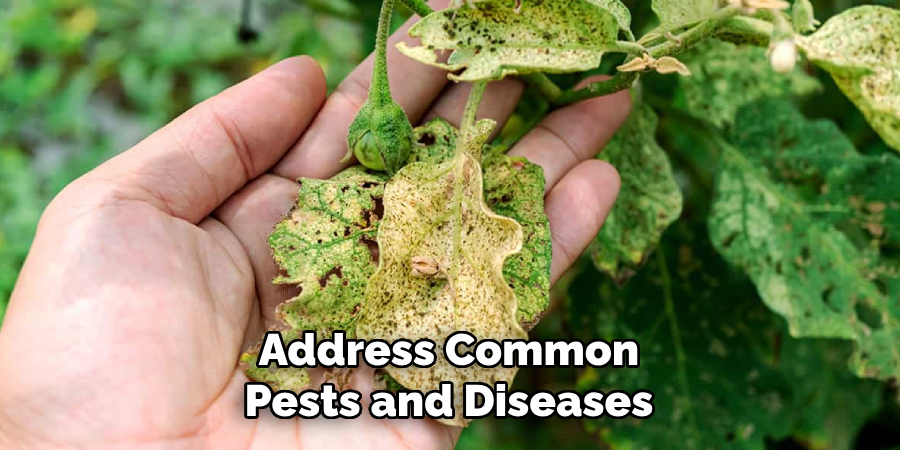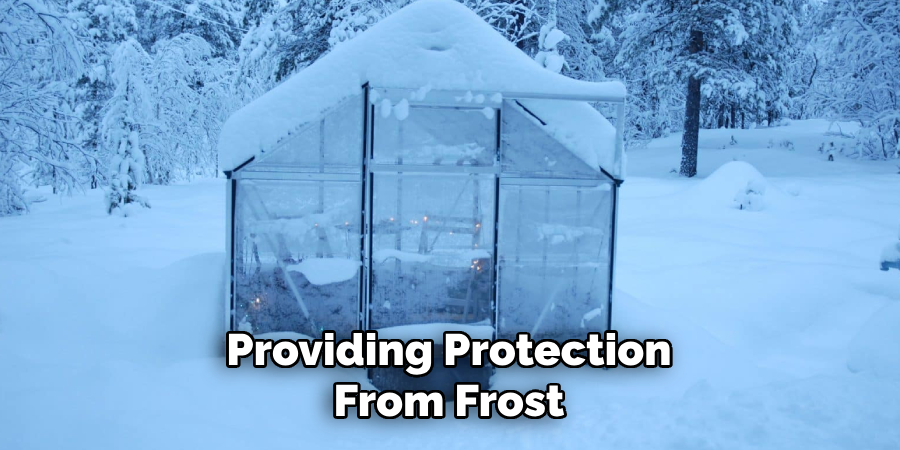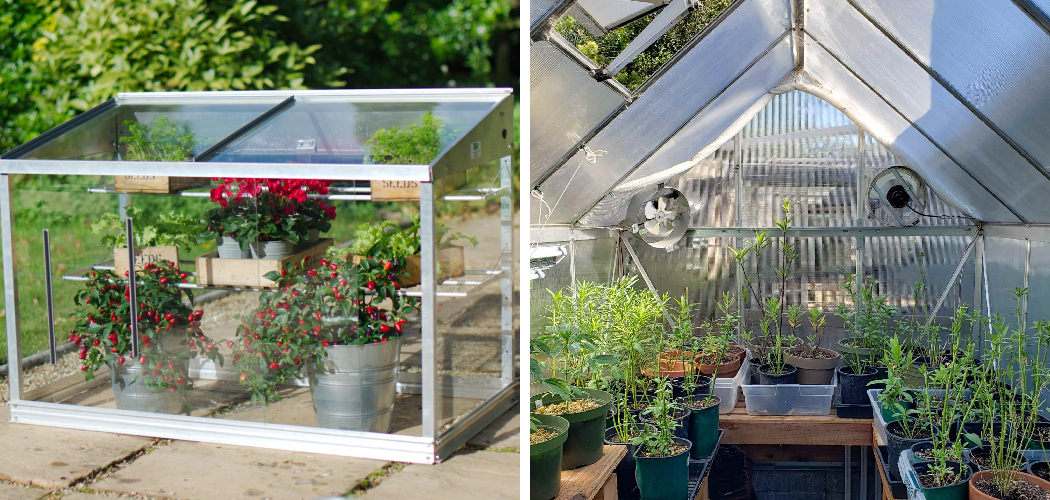To use a small greenhouse effectively, start by placing it in an area with ample sunlight, maintaining proper temperature and humidity levels, regularly watering and fertilizing plants, and providing adequate ventilation for air circulation. A small greenhouse can be a valuable asset for both experienced and novice gardeners.
It offers a controlled environment where you can grow a wide variety of plants throughout the year. Whether you want to extend your growing season, protect delicate plants from harsh weather conditions, or simply create an ideal space for gardening, a small greenhouse is the perfect solution.
By understanding how to properly use a small greenhouse, you can maximize its potential and create a thriving garden oasis. We will explore the essential steps and techniques to make the most out of your small greenhouse and achieve successful cultivation.

How to Use Small Greenhouse: Step by Step Guide
Choosing The Right Small Greenhouse
Choosing the perfect small greenhouse involves various essential factors. Understanding the wide range of small greenhouse options is crucial. Adequately assessing your budget is key to finding a budget-friendly setup.
Setting Up Your Small Greenhouse
Setting up your small greenhouse starts with finding the perfect location. Make sure it’s sunny and receives adequate light. Next, prepare the ground by leveling the area. This will provide a stable base for installation. Once the ground is ready, it’s time to assemble the small greenhouse structure.
Follow the manufacturer’s instructions carefully. Connect the frames and secure them firmly. Ensure that the structure is stable and secure. Don’t forget to add ventilation and shading options for temperature control. Finally, place your plants inside and monitor them regularly for any adjustments needed.
With these steps, you’ll be on your way to using your small greenhouse effectively. Get ready to enjoy the benefits of growing your own plants in this controlled environment.
Essential Tools And Equipment For Small Greenhouse Gardening
Proper ventilation and shading are crucial for small greenhouse gardening. Adequate airflow helps regulate temperature and prevents excess humidity. Meanwhile, shading prevents plants from getting scorched by the sun’s intense rays. When it comes to watering systems, drip irrigation is an excellent choice for small greenhouses.
This method ensures a consistent and controlled water supply to the plants, reducing the risk of overwatering. An automated irrigation system can also be beneficial, allowing for precise scheduling and efficient water usage. Whether you opt for manual watering or automated systems, it’s important to monitor the moisture levels and adjust accordingly.
By utilizing these essential tools and equipment, small greenhouse owners can create a suitable environment for their plants to thrive.
Optimizing Light And Temperature In Your Small Greenhouse
To optimize growth in your small greenhouse, focus on maximizing natural light for your plants. Additionally, consider utilizing supplemental lighting to ensure year-round gardening success. This will help compensate for any light gaps that may occur. Moreover, controlling temperature fluctuations is crucial for maintaining a healthy greenhouse environment.
Ensure that your greenhouse is well-insulated and equipped with proper ventilation to regulate heat. By providing your plants with adequate light and a stable temperature, you will create the ideal growing conditions for a thriving greenhouse garden.
Choosing And Caring For Plants In A Small Greenhouse
Choosing the right plant varieties for your small greenhouse is crucial. Limited space requires careful consideration. Proper care and maintenance are vital to ensure healthy growth in this unique environment. It’s essential to address common pests and diseases to protect your plants.

Regular inspections and taking preventive measures can help mitigate these issues. With proper knowledge and attention, you can create an optimal environment for your plants to thrive in a small greenhouse. Remember to provide the necessary light, temperature, and moisture conditions specific to each plant variety.
By understanding the needs of your plants and giving them the care and attention they require, you can enjoy a flourishing garden in your small greenhouse.
Planning And Implementing A Small Greenhouse Crop Rotation System
Creating a crop rotation plan is crucial for small greenhouses. It ensures optimal plant health and yield. By rotating crops, you prevent the build-up of pests and diseases in the soil. This practice also helps manage soil fertility and nutrition for successive plantings.
You can plan your crop rotation by dividing your greenhouse into different planting areas. Rotate plant families or crops with different nutrient requirements to maintain soil health. For example, you can follow a leafy green crop with a legume to replenish nitrogen levels.
Implementing a crop rotation system will maximize the use of your small greenhouse space while promoting healthy plant growth.
Extending The Growing Season With A Small Greenhouse
Extending the growing season can be achieved efficiently using a small greenhouse. The primary technique involves starting seeds early inside the greenhouse, allowing them to mature before transferring them to the garden. Overwintering plants is another way to maximize their lifespan, enabling them to thrive beyond their typical season.
By providing protection from frost, wind, and harsh conditions, a small greenhouse promotes healthier growth and extends the overall longevity of plants. Additionally, season extension techniques enable year-round harvesting, ensuring a continuous supply of fresh produce. With careful planning and monitoring of temperature and humidity, a small greenhouse becomes a valuable tool for any avid gardener.

Whether it’s starting seeds early or overwintering plants, a small greenhouse offers numerous possibilities for lengthening the growing season and maximizing garden productivity.
The Art Of Small Greenhouse Gardening
Small greenhouses are not only functional but can also be visually appealing. When it comes to smaller spaces, designing an aesthetically pleasing layout is key. Incorporating vertical gardening solutions is a great way to optimize limited space. Utilizing hanging planters and trellises can create a beautiful display.
Additionally, container gardening is an innovative option for small greenhouse owners. You can experiment with different types of containers, such as hanging baskets or stacked planters, to maximize space. Thinking creatively about plant placement and combining different heights and textures will add visual interest to your greenhouse.
With these tips, you can create a small greenhouse that is not only functional but also a beautiful addition to your garden.
Troubleshooting Common Issues In Small Greenhouse Gardening
Troubleshooting common issues in small greenhouse gardening can be a challenge. One issue is dealing with temperature fluctuations and climate challenges. Maintaining a stable temperature is crucial for plant growth. Preventing fungal diseases in a humid small greenhouse environment is another concern.
Proper ventilation and air circulation are key. Additionally, nutrient deficiencies and imbalances may occur. Regularly testing the soil and adjusting the fertilizer can help address this problem. Remember to monitor the health of your plants and make adjustments as needed to ensure successful greenhouse gardening.
Harvesting And Enjoying The Fruits Of Your Small Greenhouse
Harvesting plants in a small greenhouse requires precise timing and proper techniques. It’s essential to monitor the growth stages of your plants closely. Once they reach maturity, harvest them promptly to enjoy the fruits of your labor. From delicious recipes to creative ideas, there are numerous ways to utilize your greenhouse-grown produce.
Whip up fresh salads, hearty soups, or even vibrant smoothies using your homegrown vegetables and herbs. The taste and quality of greenhouse-grown produce can be truly exceptional. Moreover, don’t keep the joy of small greenhouse gardening to yourself—share it with others.
Organize a garden tour or a community event where you can showcase the wonders of greenhouse gardening. The sight of thriving plants and the fragrance of fresh produce will surely captivate and inspire fellow enthusiasts. Start reaping the benefits of your small greenhouse and let others relish in the beauty of this sustainable gardening practice.
Frequently Asked Questions For How To Use Small Greenhouse
How Do I Set Up A Small Greenhouse?
Setting up a small greenhouse is easy. Choose a suitable location, assemble the frame, cover it with the greenhouse material, and secure it with clips. Install shelves or benches and organize your plants. Ensure proper ventilation, temperature control, and watering for optimal greenery.
What Are The Benefits Of Using A Small Greenhouse?
A small greenhouse provides several benefits. It extends the growing season, protects plants from harsh weather conditions, reduces pest infestation, and allows for year-round gardening. It also creates a controlled environment for starting seeds, nurturing delicate plants, and experimenting with different crops.
How Often Should I Water My Plants In A Small Greenhouse?
The frequency of watering plants in a small greenhouse depends on various factors, such as temperature, humidity, and plant type. As a general rule, check the soil moisture regularly and water when the top inch feels dry. Avoid overwatering, as it can lead to root rot and other issues.
Adjust watering based on specific plant needs.
Conclusion
Utilizing a small greenhouse is a practical and efficient way to extend the growing season and protect your plants from harsh weather conditions. By creating a controlled environment, you can grow a wide variety of plants throughout the year, regardless of the climate in your area.
The key to successfully utilizing a small greenhouse is to understand the needs of your plants and to provide them with the necessary care, such as proper watering, ventilation, and monitoring of temperature and humidity levels. Additionally, incorporating vertical gardening techniques and utilizing space-saving solutions can maximize the productivity of your small greenhouse.
Whether you are an experienced gardener or a beginner, a small greenhouse can provide you with a space to nurture your green thumb, experiment with different plant varieties, and enjoy the rewards of growing your own fresh produce. With careful planning and attention to detail, a small greenhouse can be a valuable addition to any garden or backyard.

